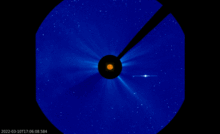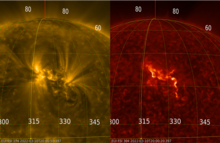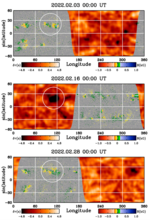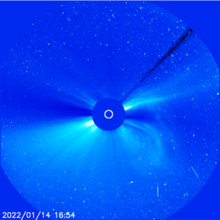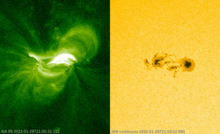news
Submitted on 2022-03-16
NASA has just announced the passing away of Eugene Parker, known for his contributions in the research on the solar wind and coronal heating.
Submitted on 2022-03-15
The CME associated with a long duration event on 10 March impacted the earth enviroment on 13 March and caused a moderate geomagetic storm later that day and early on 14 March.
Submitted on 2022-03-08
An M2 flare erupted in small sunspot region NOAA 2958 on 2 March. The entire fleet of solar satellites was able to record the event.
Submitted on 2022-03-04
Le Comité de Direction du SPP Politique scientifique, s’associe aux nombreux messages de soutien de la communauté scientifique belge et internationale concernant le conflit armé en Ukraine.
Submitted on 2022-03-04
Het Directiecomité van de POD Wetenschapsbeleid, sluit zich aan bij de talrijke steunbetuigingen van de Belgische en internationale wetenschappelijke gemeenschap in verband met het gewapend conflict in Oekraïne.
Submitted on 2022-03-04
The Management Committee of Belspo, joins the numerous expressions of support from the Belgian and international scientific community regarding the armed conflict in Ukraine.
Submitted on 2022-03-02
Space-based observations reveal amazing features of the spectacular far-side solar eruption that occurred on 15 February.
Submitted on 2022-02-23
The STCE's SC25 Tracking page has been updated to reflect the latest evolution in solar and space weather activity. Solar cycle 25 seems to be heading for a maximum that is a bit higher than originally predicted.
Submitted on 2022-02-15
Following a minor geomagnetic storm on 3 and 4 February, 40 Starlink satellites got lost. A number of these have already burned up in the earth's atmosphere.
Submitted on 2022-02-09
Sunspot region NOAA 2936 dominated the solar activity during the last 2 weeks. It was one of the largest sunspot groups so far this solar cycle, and produced more than 50 C-class flares.
Pages
Zircon - This is a contributing Drupal Theme
Design by
WeebPal.




